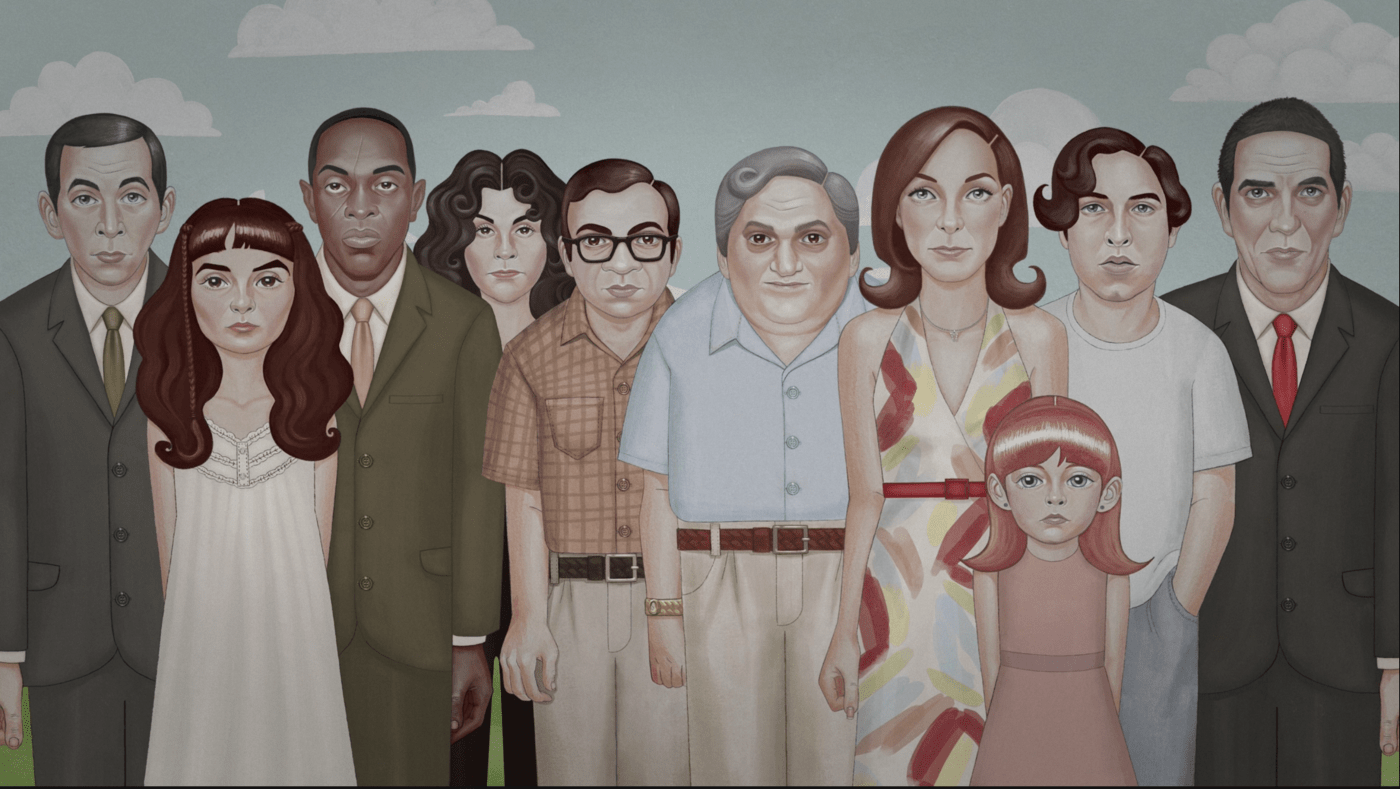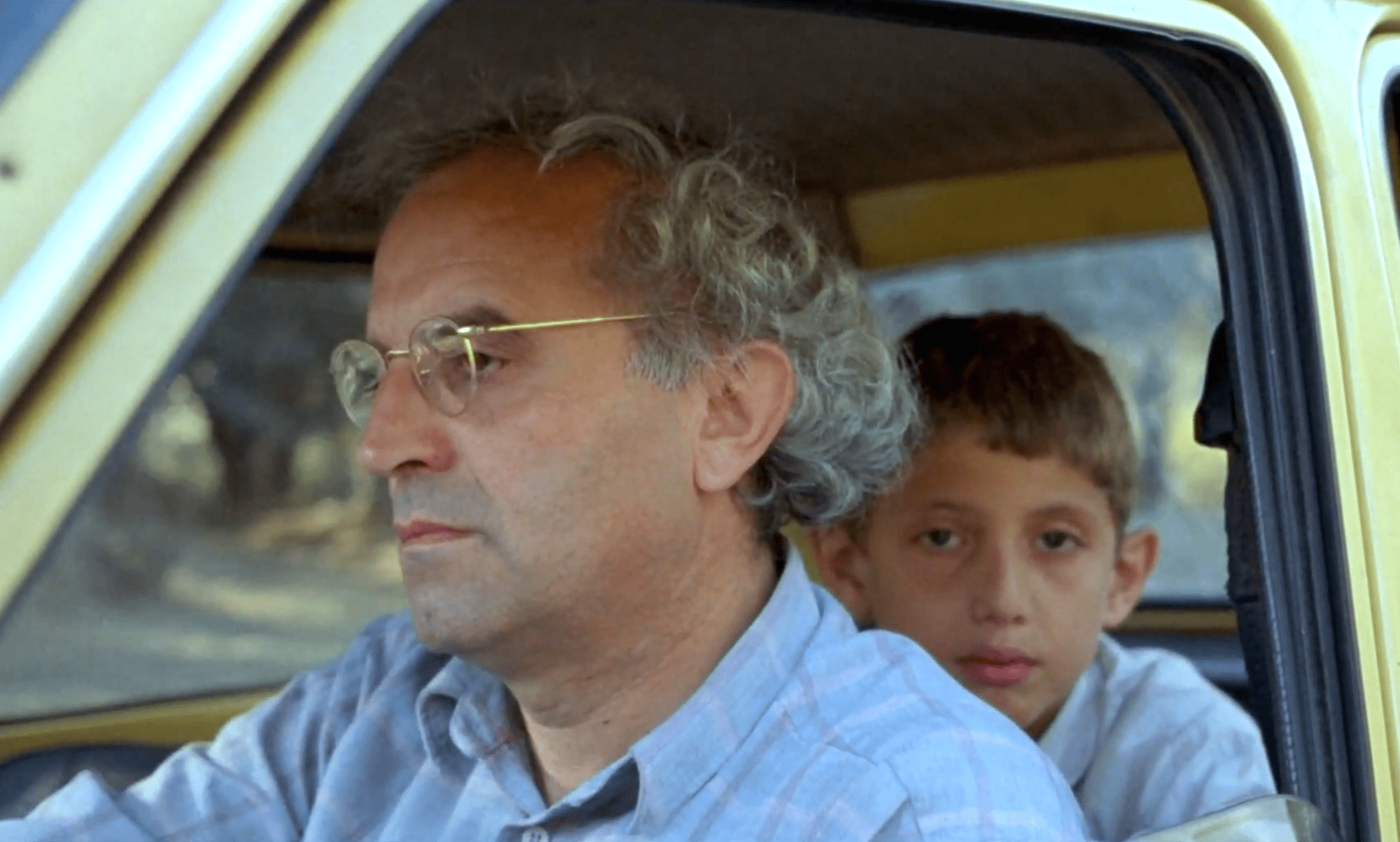
This Is Not a Burial, It’s a Resurrection is a rich and earnest film full of pathos and empathy. It is essentially a portrait of an 80 year old woman named Mantoa who is preparing for the end of her life, but as the title implies endings and beginnings are sometimes hard to distinguish.
The film sets up a tension between progress and tradition and then places Mantoa in the middle. Mantoa has outlived her family, including several children and she is about to outlive her hometown which will be washed away when the new dam is built. The film begins when she loses her last son.
Mantoa’s emotional state from then on is a complex mixture of sullen resignation and stubborn stoicism. She is mostly silent, but far from quiet. She stands like a judgmental specter always dressed in her mourning black, observing the people of her village. The camera often uses her old and weathered face as a focal point around which everything spirals.
Mantoa is firmly tied to the history and traditions of her people. Her ties to the past appear to be hindering her ability to deal with the realities of the present but slowly it becomes apparent that for her the only way forward is by using the past as a guide. It is an anchor point which provides an orientation for how she will proceed.
The Criterion Collections synopsis describes the film as magic realist and I can see why, but it is very subtle.There are no overt supernatural or inexplicable events but there is a mood, set mostly by an unidentified narrator that gives the film an otherworldly feeling. The narrator does not appear as a character in the story but he does often appear on screen as he narrates. He is in some unknown shadowy place, hunched over a strange instrument that he plays like a harmonica. The instrument is powerful and evocative. It does not produce a predictable or steady tone. It growls and squeals like something from deep inside the body. It’s a profoundly powerful presence throughout the film.

The narrator speaks in poetic terms like a shaman recounting a legend. He helps us to know what is behind Mantoa’s unmoving visage. Meanwhile the villagers argue and struggle to come to terms with the impending demise of their home. Eventually Mantoa becomes a rallying point. Her steadfast decision to defy the government and stay put inspires most of the town to follow her, but none of them are as stubborn or strong as Mantoa. If people or circumstances do not cooperate with Manto’s plans she is unfazed.
When a villager refuses to dig her grave before her death she drags a pickaxe out into the field and digs it herself. When the bus she is on is delayed she just gets off and walks the rest of the way down the highway on her own. She suffers no equivocation, and it is equivocation that progress is asking for. The government promises to resettle them, and to exhume and move the graveyard, but Mantoa is not having it.
All of this transpires on the enormous stage of the African landscape. All around her are the scrubby fields and rocky hills of Lesotho, South Africa. Often in the distance we see two hills that look very much like breasts complete with nipples. They give the landscape a humanity and life that underlies all the conflict. They provide an outward reminder of the village’s relationship to the earth.

The villagers live close to the land as if the earth is their mother and the dam is poised to subdue and conquer that mother. The film may not have many bright colors, but the earthy tone of the soil, rocks, skin, and sand is deep and saturated. There is some green and a special tribal blue that the villagers all wear, but the colors of the film are mostly variations of umber and ocher. They may be earth tones but they are not dull they reflect yellow in the sunshine and release deep reds when it rains. This Is Not a Burial, It’s a Resurrection is a sensual film where everything seems tactile and present.
The dialectic between tradition and progress has been played out for centuries. Both tradition and progress are flawed terms that tend to attach importance to ideas that are at best subjective. Both terms take a series of events and connect them to establish a meaning. Progress assumes that humanity is on a timeline headed toward a better world. It sees us as continually improving which is not at all a foregone conclusion. Tradition looks at past events and surmises that past practices are valuable simply because they are old. Any given ritual or belief needs no other explanation other than the fact that someone else has done it before.

The flaws in this dichotomy are at the heart of the tension in the film. In the end Mantoa does not find a resolution to the conflict, but she finds a way forward. Some premises are best left unsolved. Allowing one side to win oversimplifies everything that came before it.
Ultimately This Is Not a Burial, It’s a Resurrection is not about conflicting worldviews it is about the characters. In many ways Mantoa is sealed up tight but her taciturn silence does not diminish her depth.
This Is Not a Burial, It’s a Resurrection was written and directed by Lemohang Jeremiah Mosese in 2019. It is his third film and is apparently semi-autobiographical. It is not surprising that This Is Not a Burial, It’s a Resurrection is based on personal experience. The film has an intimate and emotional quality that would be hard to fake.

If you liked this article you might also like -
https://filmofileshideout.com/archives/lee-isaac-chungs-powerful-film-munyurangabo



